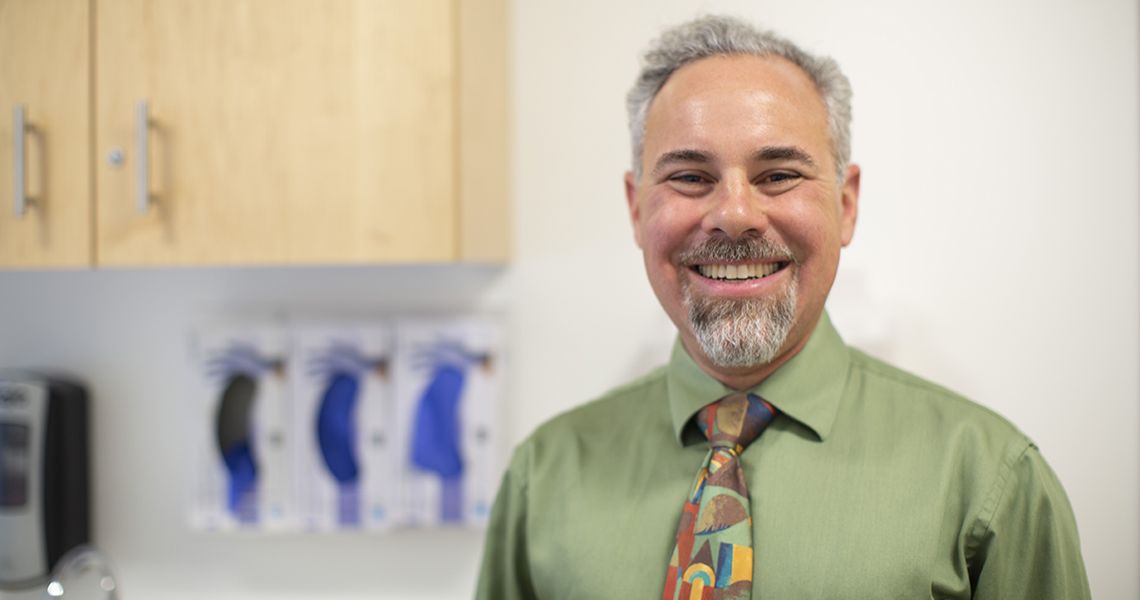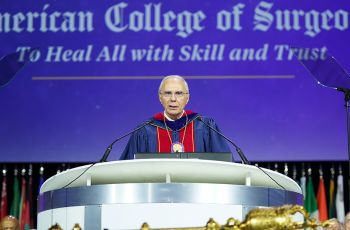During the spring and summer months of the year when the air warms, outdoor sports are a top choice for exercise enthusiasts. Accompanying cycling, basketball, baseball, and more, however, are injuries. From fingers to toes and knees in between, these injuries can range from mild to serious. Here, Marc Chodos, MD, orthopaedic surgeon at the George Washington University (GW) Medical Faculty Associates (MFA), explains which injuries are the most common, how to prevent them, and when to seek help.
Q. How common are sports injuries?
Chodos: Sports-related injuries are very common. In the United States during 2019, for example, an estimated almost 3.4 million emergency room encounters occurred for sports and recreational injuries. This number does not include injuries that present for medical care at a site other than the emergency room or injuries that are self-treated. Additionally, this number includes a wide range of severity, varying from minor injuries treated with symptomatic care on up to death.
Q. Which sports tend to have the most injuries?
Chodos: The sporting endeavors accounting for the most injuries are basketball, cycling, and football. To some degree, this is related to the absolute number of participants, because these are popular throughout the country. Cycling has the highest rate of injury, almost double that of basketball and about five times that of football and soccer.
Q. What are the most frequent sports-related injuries you see?
Chodos: Looking at all sports, ankle sprains are the most common injury type, but injury type varies depending on the sport. For example, head injuries (concussion, fracture) and shoulder injuries (fracture, dislocation) are the most common injury types seen from bicycle accidents. Basketball and soccer injuries are most commonly ankle or knee sprains or fractures, followed by finger injuries. Finger, shoulder, and knee injuries (fractures, sprains, dislocations) are the most common injuries associated with football. Baseball and softball injuries most often involve ankle or knee sprains or fractures, followed by facial injuries.
Q. At what point should you seek medical care for an injury?
Chodos: Mild musculoskeletal injuries can often be managed with relative rest or activity modification, ice, elevation, compression with an elastic bandage or sleeve, and over-the-counter anti-inflammatories. In general, you should seek medical attention if:
- You have trouble bearing weight on the extremity or moving the involved area;
- There is deformity of the injured area;
- You have significant swelling or bruising in the involved area;
- You have numbness or tingling;
- You have back or neck pain after an injury, especially if associated with numbness, tingling, weakness, or pain that radiates into an arm or leg;
- You injured your head and have loss of consciousness, headache, nausea, vomiting, confusion, dizziness or balance problems, concentration or memory problems, sensitivity to light or noises, trouble sleeping, or if you feel sluggish or foggy; or
- The musculoskeletal symptoms are not improving over a week’s time, or if you have recurrent symptoms when you try to increase activity.
Q. How can you prevent injuries from happening when you’re playing sports?
Chodos: Injury prevention is a really broad topic. General tips:
- Use proper-fitting, sport-specific protective gear.
- Especially in the heat and humidity of D.C., Maryland, and Virginia, stay well hydrated and try to avoid exercising during the hottest parts of the day. While water is important, it is also necessary to replenish lost electrolytes.
- Maintaining strong musculoskeletal tissue is metabolically expensive for the body, and it will adjust things relative to the forces of life that it encounters. If you change your activity level, it takes time for the body to increase the strength of the bones, ligaments, and tendons. Many injuries happen because sudden activity changes were made, and the body does not have sufficient time to adjust to the new activity level. It is important to map out a realistic plan that gives your body time to become stronger as you increase your activity. Don’t be a weekend warrior!
- Overuse injuries are quite common. Make sure to provide sufficient rest days for your body to heal. Cross-training or mixing activities allows different muscle groups to be used and should be included in your training schedule. Listen to your body!
- Spending 20-30 minutes warming up immediately prior to strenuous exercise and sporting events can help prepare your body for the coming challenges it will face, improving performance and decreasing the risk of an injury.
- For sports associated with a higher incidence of ankle or knee injuries, there is evidence to support prophylactic bracing to decrease that risk. I think this is especially true in the setting of prior injuries to that body part.
Q. What care does the GW MFA provide for these kinds of injuries?
Chodos: At the GW MFA, we have a team of health care providers specializing in sports injury prevention, diagnosis, and treatment. Using state-of-the-art techniques, our goals are to improve function and restore quality of life.
To see an orthopaedic specialist at The GW Medical Faculty Associates for a sports-related injury, please call 202-741-3300 or email gwortho [at] mfa [dot] gwu [dot] edu (gwortho[at]mfa[dot]gwu[dot]edu).




